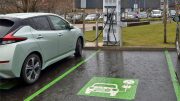As people worldwide adopt increasingly eco-conscious practices, the demand for sustainable goods and services increases. Many of us seek to shrink our carbon footprints using our purchasing power. We can also make lifestyle alterations at home, decreasing atmospheric and surface-level pollution.
In line with this trend investors evaluate sustainable consumer trends and make profitable moves within the real estate sector. Environmental engineers are working with financial professionals, developing green technology and architectural designs to support climate change prevention efforts.
Since President Joe Biden established a national carbon-neutrality goal, the sustainable real estate sector has begun expanding with a growing share for sustainable real estate.
The term “sustainable housing” signifies structures actively working to minimize adverse ecological impacts. Buildings can achieve sustainability by reducing their exploitation of natural resources, which matters because nearly 20% of the U.S.’s carbon emissions derive from the residential sector.
Reducing the carbon footprints of homes is essential for preventing climate change since a significant portion of residential power comes from fossil fuels, which produce greenhouse gas emissions. Greenhouse gases emitted during the process trap additional energy in the atmosphere, causing temperatures worldwide to rise over time.
Environmental architects recognize the emission challenges associated with residential and commercial buildings, and they’re creating sustainable solutions. Investors also evaluate sustainability’s importance, exploring its influence on the future of construction and development. There are various technologies and systems financial professionals are supporting, making sustainable real estate a reality.
A realistic and affordable option
Many investment professionals view sustainable real estate as part of the industry’s future because it is affordable and appeals to eco-conscious cconsumers. As a result, many construction professionals are developing sustainable structures using the net-zero method.
Net-zero buildings are entirely self-sufficient, producing as much emission-free energy as they consume. Construction professionals use solar panels and geothermal systems to create electricity and heat indoors. They also use rainwater-collecting technology to reduce the need for freshwater sources.
Investors are backing technological advancements in both the energy production and rainwater purification sectors. With further research and development, resource conservation devices may support large-scale structures like condo complexes. Financial professionals may effectively promote sustainable advancements by increasing the efficiency of their report processing.
When individuals use optimal monthly reporting practices, they can easily relay important information from businesses to investors. Regularly assessing the data can additionally help people minimize financial losses. Sustainable buildings also improve their savings, reducing their reliance on costly resources.
Structures using solar energy can reduce or eliminate their utility bills over time. Solar power is currently the most affordable electricity source on the market. Buildings are more affordable and have a smaller carbon footprint when using renewable power.
Decreasing our reliance on municipal water supplies also improves the cost efficiency of a structure. Another defining feature of sustainable real estate is its certifications. Leadership in Energy and Environmental Design (LEED) is a common label signifying the conscious development of a residential or commercial structure.
Energy Star is an additional certification representing the sustainability of a building’s appliances. Devices with the label use less electricity compared to conventional versions. As investors continuously support green building trends, the real estate market’s future will increase in sustainability.
The future of sustainable housing
When the Biden administration announced the national carbon-neutrality goal, it additionally created an emission-free energy distribution plan. The government plans to source 100% of the electric grid’s energy from renewable sources. Decarbonizing the power sector will improve national sustainability levels.
The real estate market can prepare for the shift to clean electricity by swapping fossil-fuel-reliant appliances for electric versions. Society at large can consider transitioning away from gas-powered water heaters to electric systems. We can also expect mass adoption of energy-efficient appliances.
Originally published by Sustainability Times





